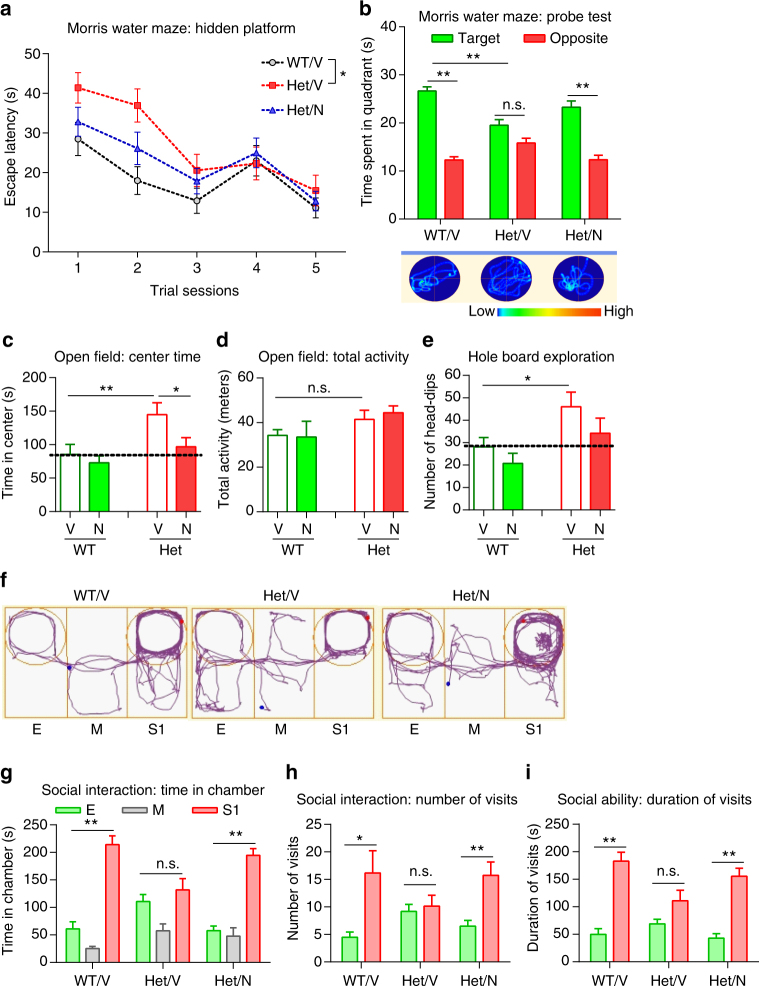Fig. 6.
NitroSynapsin rescues MCHS-like phenotypes in Mef2c-het mice. a Latency of finding hidden platform during training sessions in the Morris water maze. b In the probe test, vehicle-treated Mef2c-het mice (Het/V) showed no preference between target and opposite quadrants, suggesting impaired memory. Treatment with NitroSynapsin (N) rescued this effect (Het/N). Representative swim patterns shown at bottom. c, d In the open field test, Het/V mice exhibited increased center time that was rescued by treatment with N (c). In contrast, Het/V mice displayed normal total activity (d). e Het/V mice displayed increased head-dips per hole, suggesting repetitive behavior. Treatment with N rescued. f–i N treatment rescued aberrant social ability in Mef2c-het mice. f Representative traces of mouse movement in the three-chamber social ability test. g–i Mef2c-het mice (Het/V) exhibit abnormalities in social interaction measured by time spent in each chamber (g), number of visits (h), and duration of visits (i) to E (empty) or S1 (stranger mouse 1) chambers. N treatment ameliorated this deficit (Het/N). Data are mean ± s.e.m. n = 7–9 per group. *P < 0.05, **P < 0.01 by ANOVA. M middle chamber

